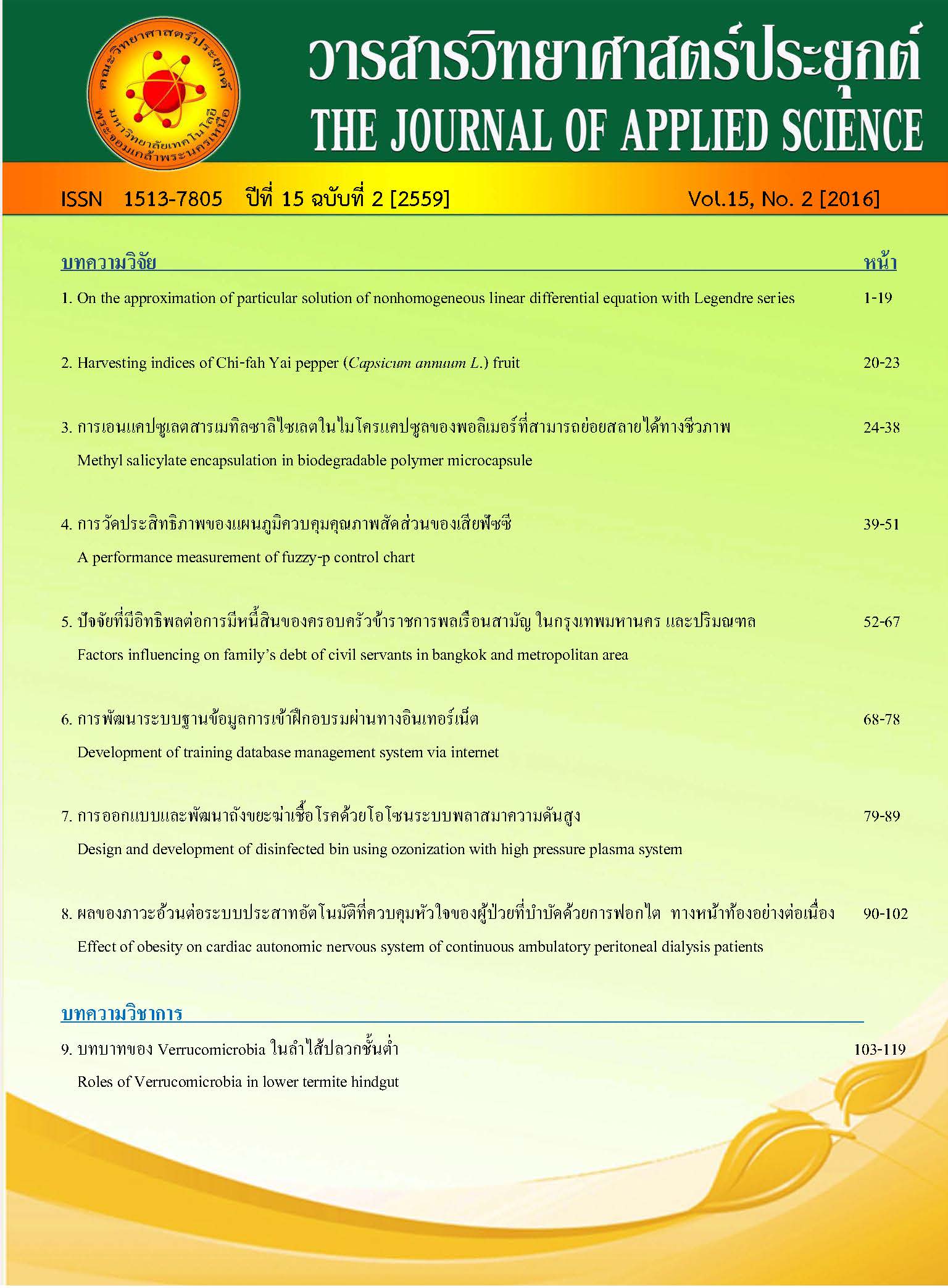Roles of Verrucomicrobia in lower termite hindgut
Abstract
Termites play an important ecological role in degrading organic matters and recalcitrant compounds like lignocellulose in wood materials and releasing the carbon compounds back to the environment. In general, the digestive tract of lower termites consists of the foregut, midgut and dilated hindgut. The dilated hindgut composes of abundant and diverse microorganisms covering 3 domains of life which are Eukarya, Archaea and Bacteria. These microbes secrete cellulase and hemicellulase enzymes to degrade lignocellulosic materials into acetate. Then, acetate can be further absorbed by termites as their energy source. Moreover, microbes play an essential role in the nitrogen metabolism by providing nitrogen for the termites because termite’s diet contains no nitrogen content. Microbes can also help maintain anoxic condition at the gut core and microoxic concentrations at the gut periphery. Studies of genome sequences, mRNA and proteins in several strains of bacteria in the phylum “Verrucomicrobia” isolated from the hindgut of termites Reticulitermes flavipes reveal that the bacteria have a potential role in degrading lignocellulose because of the presence of several lignocellulose genes, such as xylanase, acetyl xylan esterase, cellulase (glycoside hydrolase family 5). Moreover, the availability of nitrogen fixing genes (nij) indicates a potential role in fixing nitrogen for the termite. Besides, the presence of cbb3-type cytochrome oxidase, an enzyme that has high affinity to oxygen, reveals a vital role of the bacterial strains in controlling oxygen level in the hindgut in order to sustain biochemical reactions and microbial community living in the hindgut.


